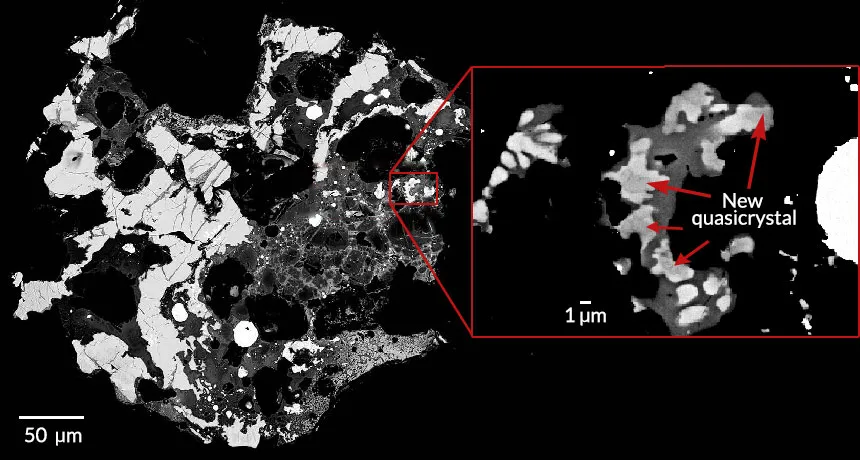Third kind of quasicrystal found in Russian meteorite
Odd mineral first to be discovered in nature before being made in lab

QUIRKY CRYSTAL A new type of quasicrystal (enlarged, right) has been discovered inside a fragment of a Russian meteorite (left), as seen in this backscattered electron image.
L. Bindi et al/Scientific Reports 2016